Nokia 6.1 vs. Moto G6 Plus: With so much shared, design and camera make the difference
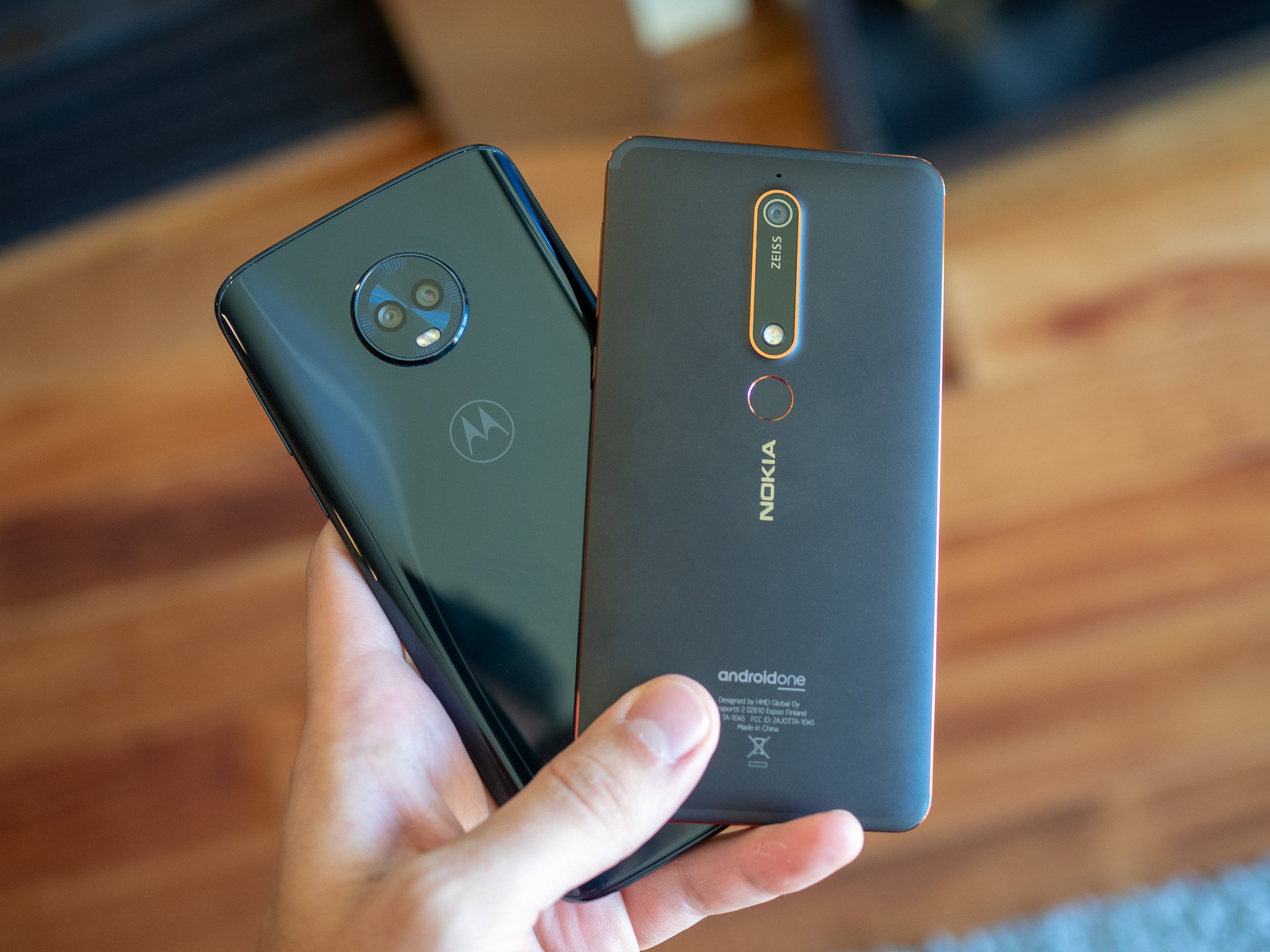
For as solid and consistent as the flagship space has become, there's still plenty of competition and innovation happening at the lower price points. Ranging between $250 and $350, there are lots of good options out there to get a great phone without breaking the bank. Two of the big names in this segment are the Nokia 6.1 and Moto G6 Plus, which both give solid specs, interesting designs and a promise of good clean software.
But which one is right for you? We have both phones in hand to compare and see the areas where each one is best and what complete package offers the better value.
What's the same
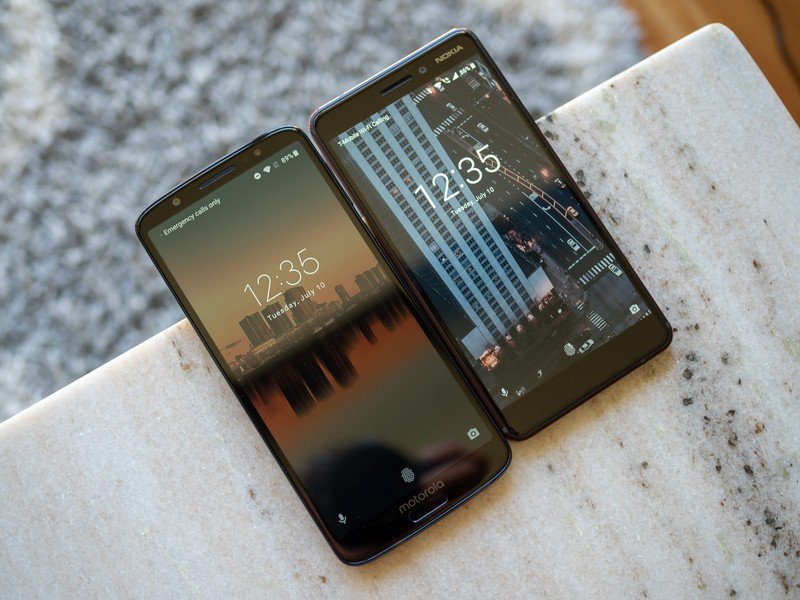
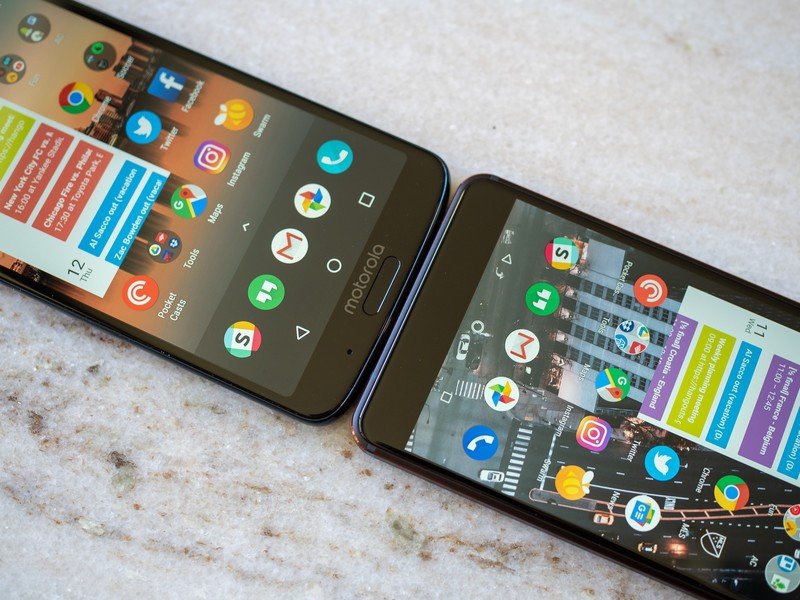
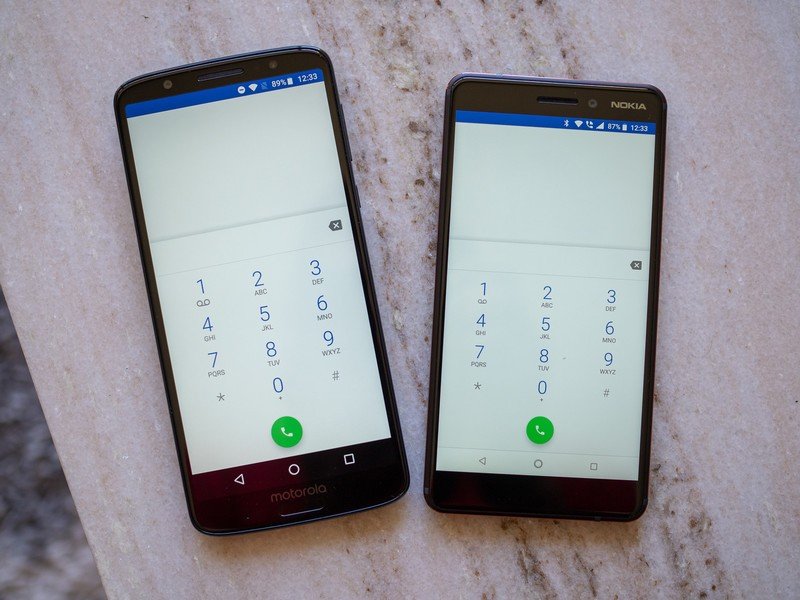
Nokia and Motorola have dialed in on very similar core platforms, with both phones based on a Snapdragon 630 processor. The Moto G6 Plus has the benefit of more internal storage with 64GB, but the Nokia 6.1's 32GB is plenty for the price and both phones offer an SD card slot for expansion. They're both running 1080p displays, and the battery sizes are comparable — 3200mAh for Motorola, and 3000mAh for Nokia — for full-day (and little more) battery life.
The core internals, features, display and software are nearly the same here — which is a good thing for everyone.
The core hardware ideas are the same as well. You get USB-C charging on both, a fingerprint sensor that gets the job done, plus a single basic speaker that leaves much to be desired. Though the Moto G6 Plus display is larger diagonally, its 18:9 aspect ratio means it's basically the same screen real estate as the Nokia 6.1's 5.5-inch 16:9 display. Resolution is effectively the same, as is quality — I give the small nod to Motorola for having more pleasing (read: saturated) colors, but both offer the same visibility while the Nokia has a more neutral and accurate color profile.
Both phones are running Android 8.0 Oreo, and in daily use, you wouldn't really notice the difference between the two. The Moto G6 Plus has a few of Motorola's nice-to-have features, and they're still useful, but none of them are game-changing experiences at this point. The Moto gestures and Moto Display are neat, but you'd never choose the G6 Plus just to have them. Being an Android One phone the Nokia 6.1 fully defaults to all of Google's apps and services, which is a plus for most of us — you don't have to deal with any duplicate apps or poorly-integrated manufacturer services. You also have the benefit of guaranteed software updates, which is very much the opposite of Motorola's history with its mid-range phones.
What's different
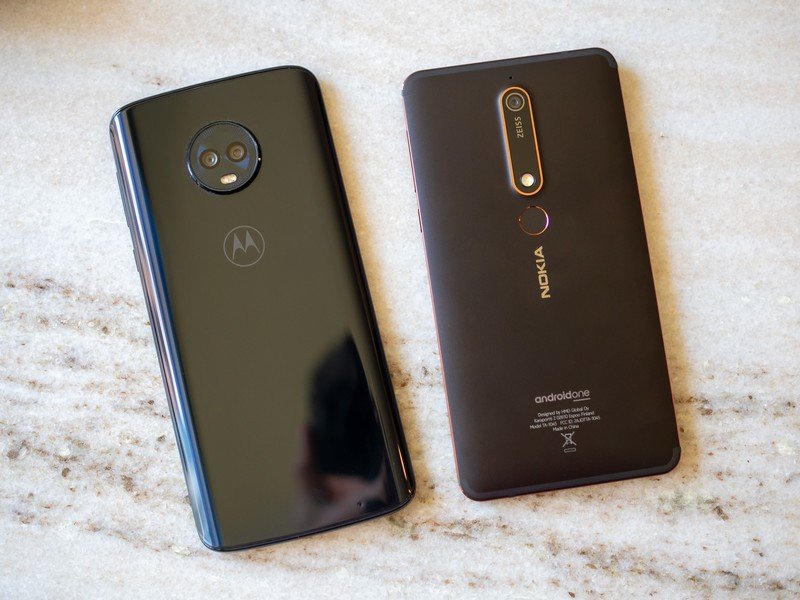
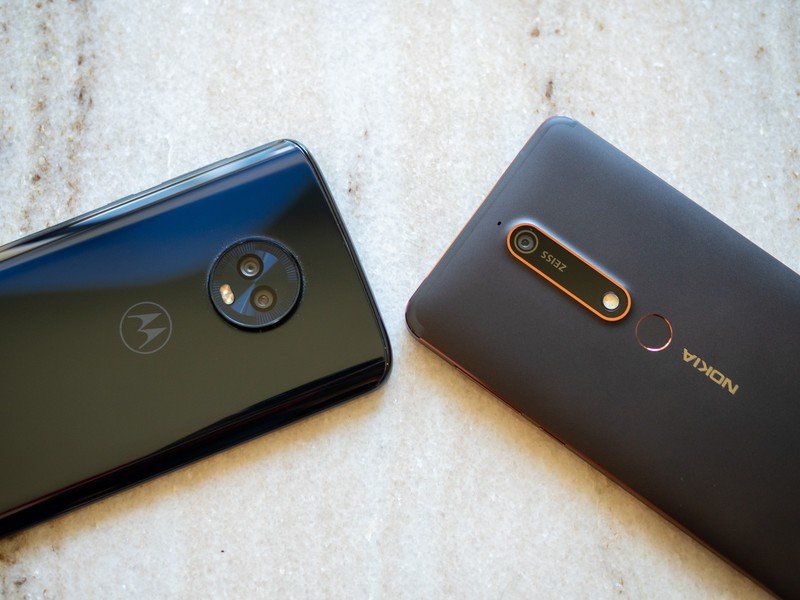
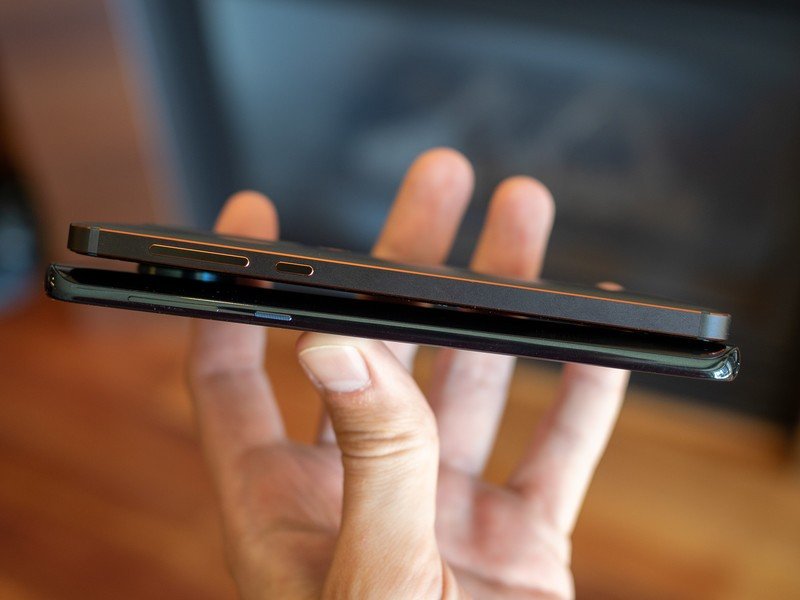
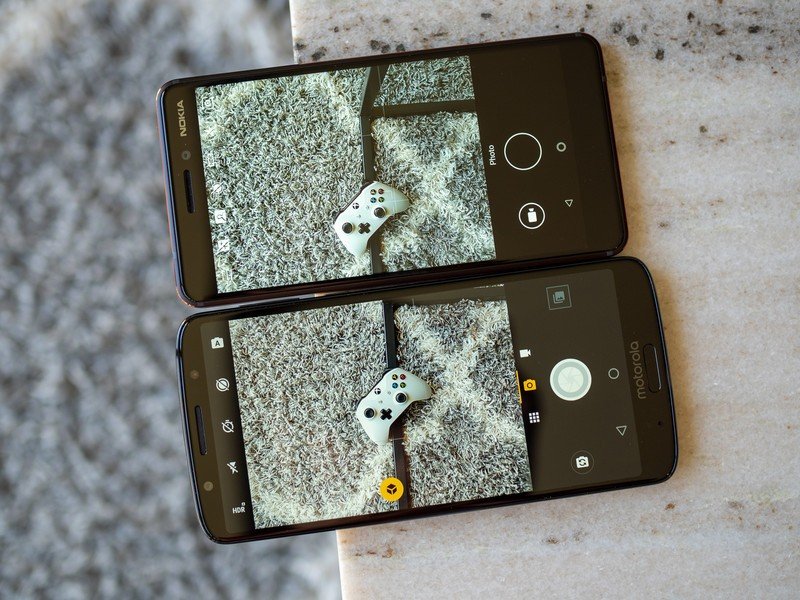
Nokia's latest round of smartphones, now under the tutelage of HMD Global, offer some of the best hardware available at their respective price points. Even for $270, the Nokia 6.1 is a nicely coated solid block of metal that feels like it will stand the test of time — especially when you set it alongside the primarily plastic-bodied phones it competes against. The finish is a little slippery when paired with this wide 16:9 aspect ratio, but it's a small knock on what is otherwise an exceptional bit of hardware for the money. The pops of color from the chamfered edges are a treat, and the curved glass on the front is striking.
Two different ways to handle hardware: focus on form or function.
The Moto G6 Plus is a bit more pragmatically designed. The entire frame is slick plastic, which looks good but feels really cheap — and there are concerns about how it'll hold up to regular use if you don't slap a case on there. The back glass is a nice touch though, and the shape of the phone is much easier to handle when paired with the grip the back provides. The result of that ergonomic shape is a blob-like design that isn't as striking or interesting as the Nokia — you could argue for either one, but the Nokia simply looks better and the Moto is easier to use in one hand.
Be an expert in 5 minutes
Get the latest news from Android Central, your trusted companion in the world of Android
When it comes to software performance, I haven't found any issues with the Nokia 6.1 in particular (aside from the camera, which I'll get to) — the Moto G6 Plus is just a little faster. Side-by-side tests show it's just a bit snappier in the interface and switching between apps, but without another phone to compare to you'd be perfectly happy with the Nokia 6.1. The Moto G6 Plus has 4GB of RAM to the Nokia 6.1's 3GB, which just gives you that little bit of breathing room to keep more apps loaded at any given time — and adds some future proofing.
The Nokia 6.1's camera app and general camera performance is disappointing.
The discussion of performance dovetails nicely into the camera comparison. First, I have to address the biggest differentiator here: the Nokia 6.1's camera app is really inconsistent. For some inexplicable reason, this "Android One" phone has camera app performance that should've stopped its certification in its tracks. The app is often slow to open, slow to respond and most importantly completely inconsistent in its ability to actually capture photos. Unfortunately a majority of the time it simply doesn't capture a photo when the shutter is pressed — and the interface shows a capture — and instead takes a photo a second or two later, typically of the ground or your fingers. It's incredibly frustrating, and something I've heard from other people's Nokia phone experiences — and also not a problem that the Moto G6 Plus suffers from.
But still, it does take photos so long as you're patient. Here's how it compares to Motorola's phone.
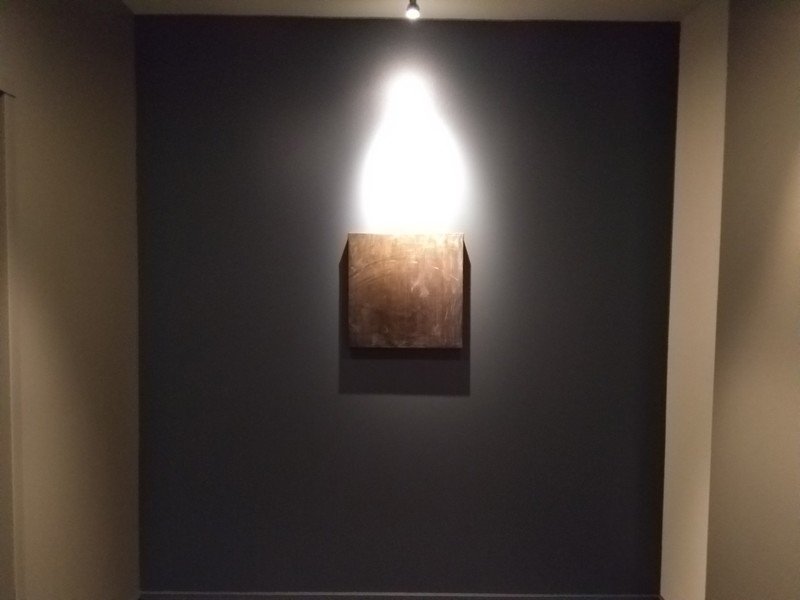
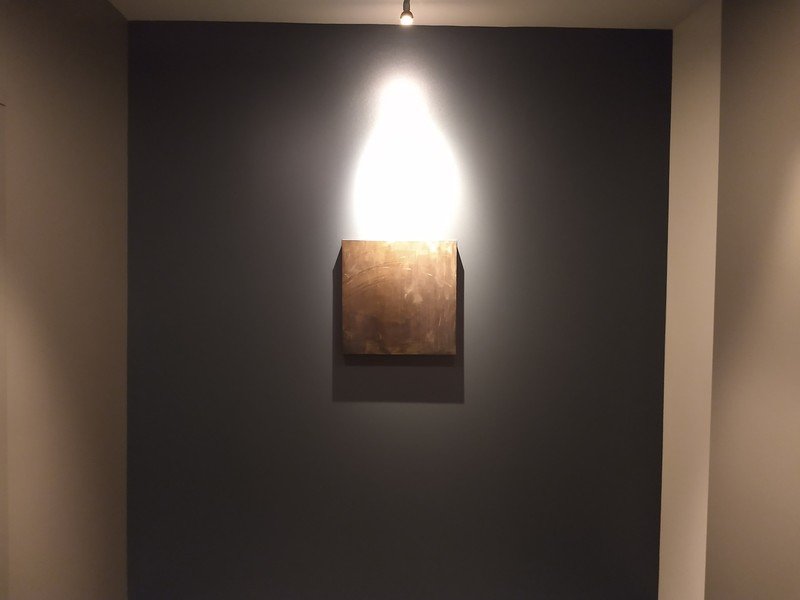
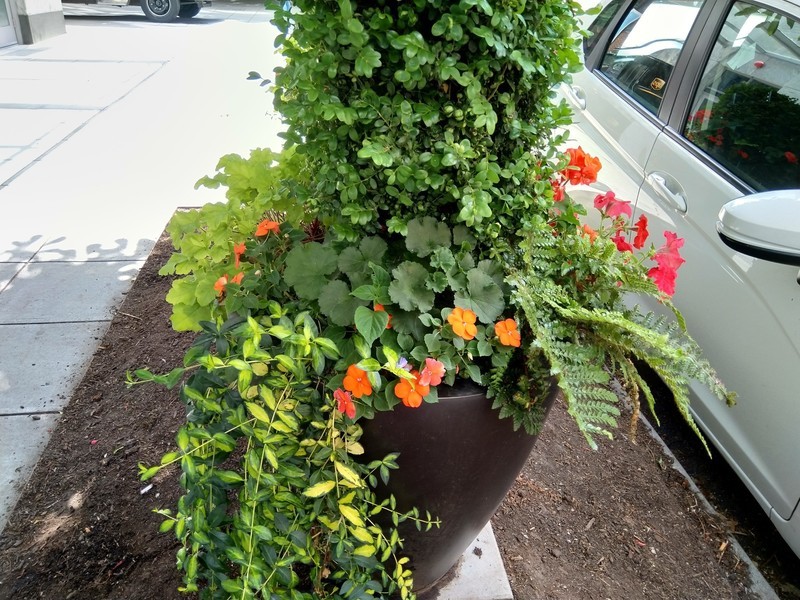


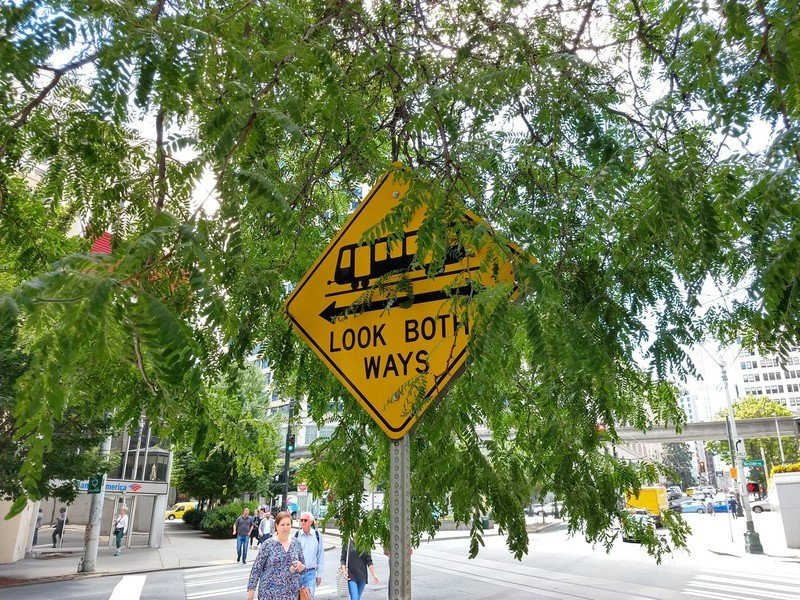




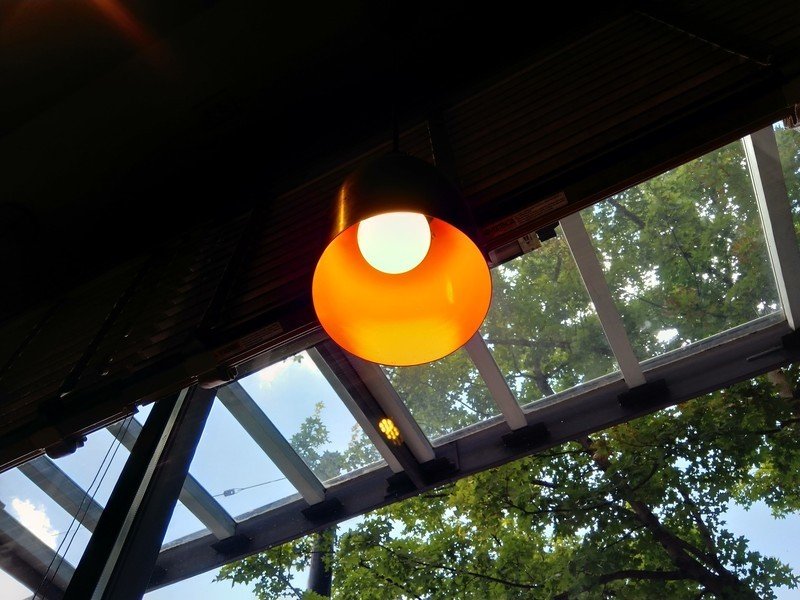
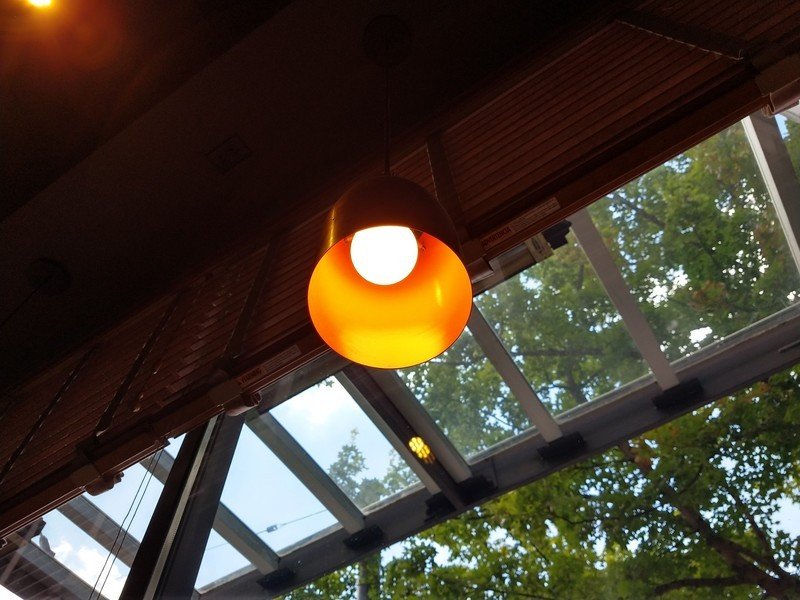
Even throwing the Moto G6 Plus's secondary camera out of the equation because it's largely irrelevant to the experience, the 12MP sensor with an f/1.7 lens has the hardware advantage over the Nokia 6.1's 16MP f/2.0 setup. Larger pixels (1.4- vs. 1.0-micron) plus more light from a wider aperture is a good equation, and the G6 Plus takes advantage to produce better photos overall.
The Moto G6 Plus offers an overall better camera — as it should, because it's a bit more expensive.
In daylight, both cameras do a fine job of recreating scenes with good colors and a nice crispness in details and edges — nothing to complain about at this price point at all. In low light the Moto G6 Plus shows its hardware advantage, though, taking photos with better details, smoother surfaces and just generally better quality. The Nokia 6.1 takes about the level of low light photos I'd normally expect for a sub-$300 phone, but the G6 Plus raises the bar.
If the Nokia 6.1's camera app offered comparable performance I'd still give the G6 Plus the nod because of its better low light capabilities, but when you add the app performance to the difference in quality you see Motorola has the complete lead here.
Which should you buy?
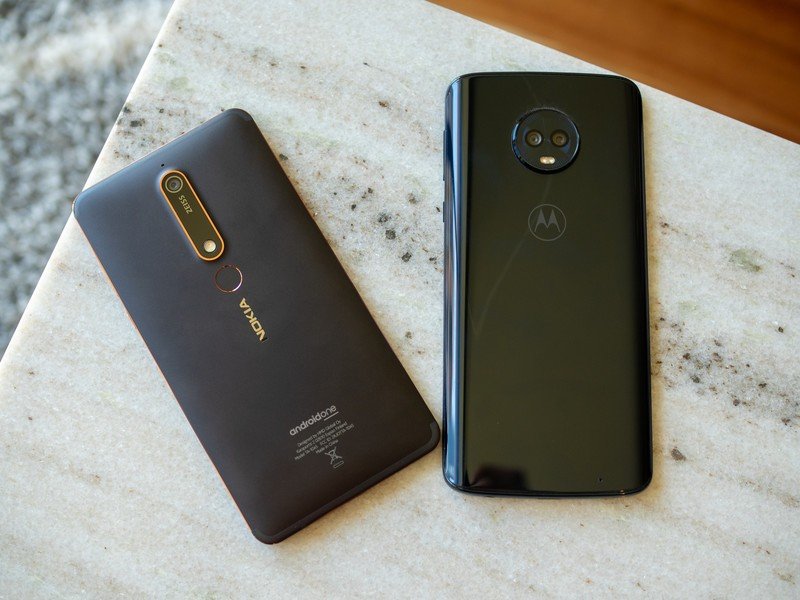
Nokia and Motorola took different strategies to the table to make a sub-$300 phone. Both have very comparable internal specs befitting the price point, as well as nice-to-see features like a quality display, good fingerprint sensor, solid battery life, USB-C and a headphone jack. But the details differ. The Nokia 6.1 offers far better-looking and feeling hardware with sleek metal and nicely sculpted glass. Having Android One's guaranteed updates is a big bonus too, especially compared to Motorola's poor history. But the Moto G6 Plus has its own benefits, like slightly better overall performance, a more ergonomic design, a better camera and more RAM and storage.
If you can spare the extra cash, consider the Moto G6 Plus — otherwise, Nokia wins.
Which of these phones is best for you partially comes down to where you're shopping. In the U.S. Nokia sells the 6.1 officially, and so it carries a very reasonable price of $270. The Moto G6 Plus you buy in the U.S. will be an imported international model with some markup pushing it over $300. At these prices, it's a tough call, because at perhaps a $50 price difference that may give you enough pause to pick the Nokia 6.1 and deal with its shortcomings in camera and performance. Here, the Nokia 6.1 is actually closer priced, depending on the day, to the standard Moto G6 — and the Nokia 6.1 is a better device for that money.
Elsewhere in the world, the Nokia 6.1 and Moto G6 Plus are much closer in price, and if you're going to spend the same amount of money on either one it feels like the Moto G6 Plus is the better of the two. It all comes down to whether you appreciate the hardware beauty and guaranteed software updates of the Nokia 6.1, or the more ergonomic feel and better performance of the Moto G6 Plus. Choose what's most important to you — either one is a great pick for about $300.
Andrew was an Executive Editor, U.S. at Android Central between 2012 and 2020.

